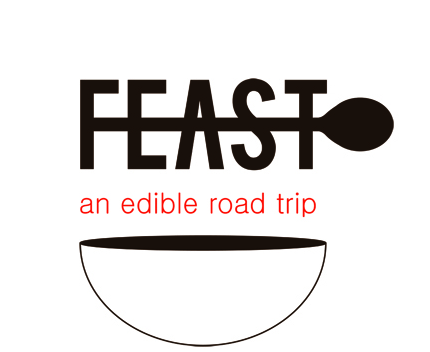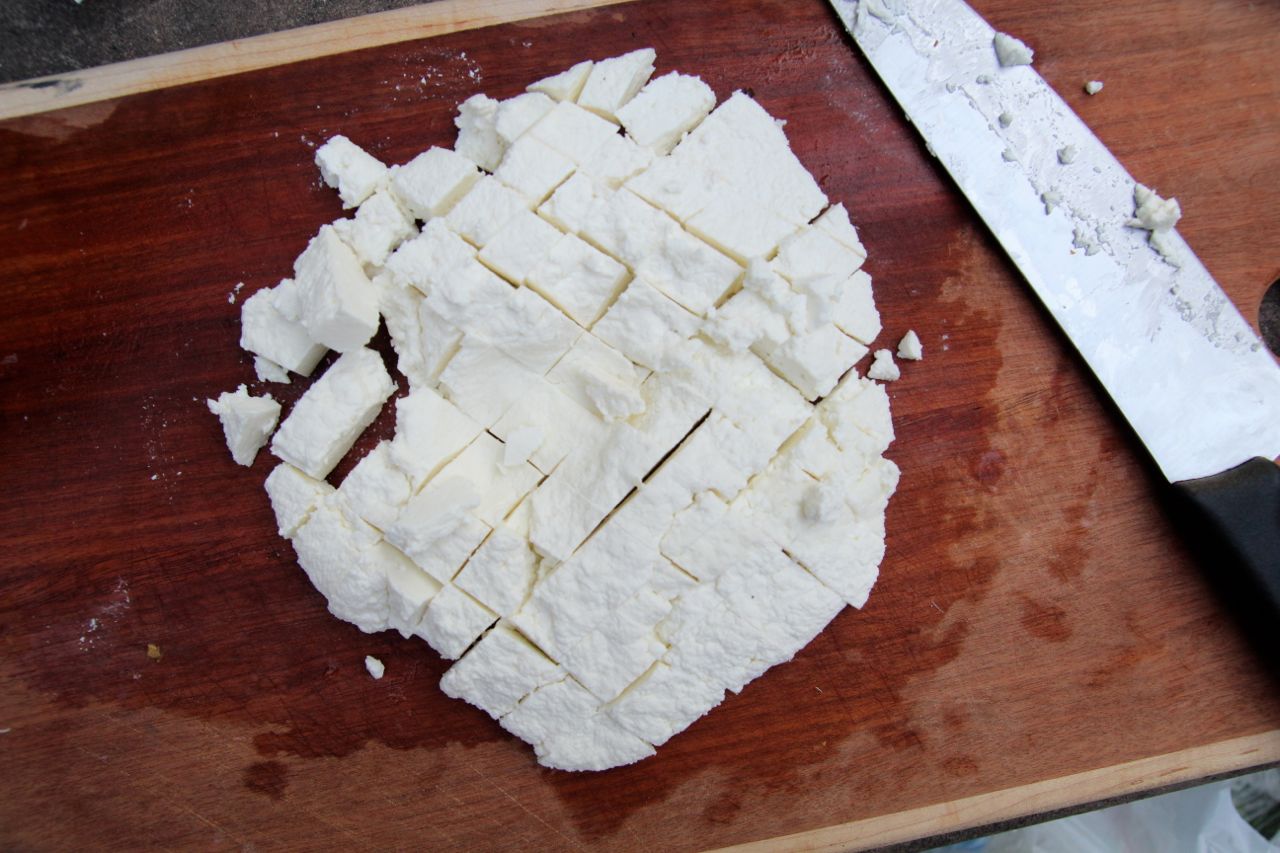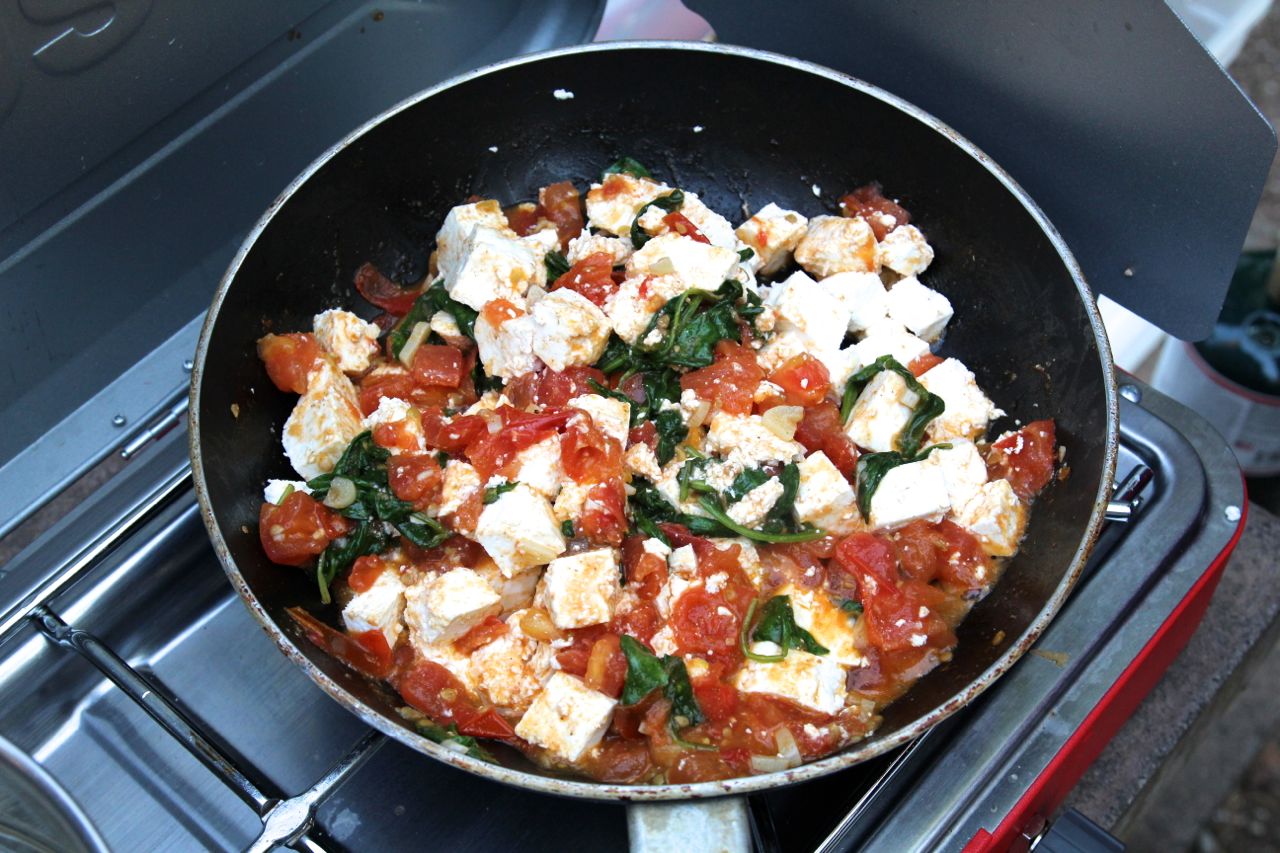Road Kitchen: Forest Paneer
We were too busy eating birch syrup and giant cinnamon buns in the Yukon to do much cooking. As soon as we reached the NWT, however, we hauled out the camp stove and fired ‘er up!
In our box of cooking supplies I’d hastily packed when moving out of my place, I found a bag of cheesecloth. Only I, Lindsay Anderson, would forget proper pajamas but remember to pack cheese-making supplies.
We had milk, vinegar, measuring cups, a colander, and an entire free evening, so I figured why not? Let’s make paneer in the woods!
It’s far less complicated than it sounds. Far less.
I used this recipe by Meeru Dhalwala and Vikram Vij; as long as you follow the steps, it turns out perfectly every time. Usually I drain the curds in a clean sink, but since I was lacking one, I jerry-rigged a cutting board over the campfire and rested our big water jug on top, then let the whey drain into the ashes below. It worked quite well, and funnily enough, this was the best batch of paneer I’d ever made!
We cut it into cubes, tossed it in a fresh tomato, spinach, garlic, and cumin sauce, and served it over brown rice. It was easy, filling, healthy, and incredibly satisfying to eat at a picnic table next to Great Slave Lake. India via Vancouver via the Northwest Territories!
Paneer
By Meeru Dhalwala, Vikram Vij
½ cup water
8 cups whole milk
¼ cup white vinegar or fresh lemon juice
Pour water into a medium, 8-inch high heavy-bottomed pot. Then add milk. Turn the milk to medium and wait for the milk to start boiling: a commercial stove takes about 15 minutes, a gas stove takes about 20 minutes, and others may take 20-25 minutes. Do not stir the milk. As the milk nears the boiling point, watch it very carefully, with vinegar (or lemon juice) in hand. Milk will start to rise in the pot. Once it has risen 3 inches, turn off the heat immediately, and gently swirl in – but do not stir in – vinegar. You want it to go throughout the milk in the pot, and not just into one spot. Allow the milk to sit for 10 minutes while the milk solids separate from the liquid.
Place a colander in the sink. Cover it completely with cheesecloth. Slow and carefully pour milk into the colander.
Allow milk solids (paneer) to sit in the colander for 15 minutes, or until the extra water has drained into the sink (we sat the colander over a bowl since we didn’t have a sink). Gently gather the four corners of the cheesecloth, and tie them together to completely enclose the paneer.
Half-fill a medium pot with water. Place the wrapped paneer either in the sink or on the counter next to the sink (or on a cutting board perched over a campfire pit), so the water from the paneer can drain away. Place the pot of water (or water jug) directly on top of the paneer and press it down gently. This will both flatten the paneer and help it release some of its water. Once the pot can easily balance on the paneer, allow it to sit for 15 minutes (for a soft paneer) to 1 hour (for a firmer paneer). Soft paneer is meant to be eaten more like cottage cheese.
Remove the pot, untie the cheesecloth, and gently slide on hand under the paneer. Transfer to a plate or cutting board. Use immediately or keep refrigerated, lightly wrapped in plastic wrap, for up to five days.
We cut ours up and served it in a sauce inspired by this recipe, but you could use it in anything!
Happy camp cooking.
-LA





